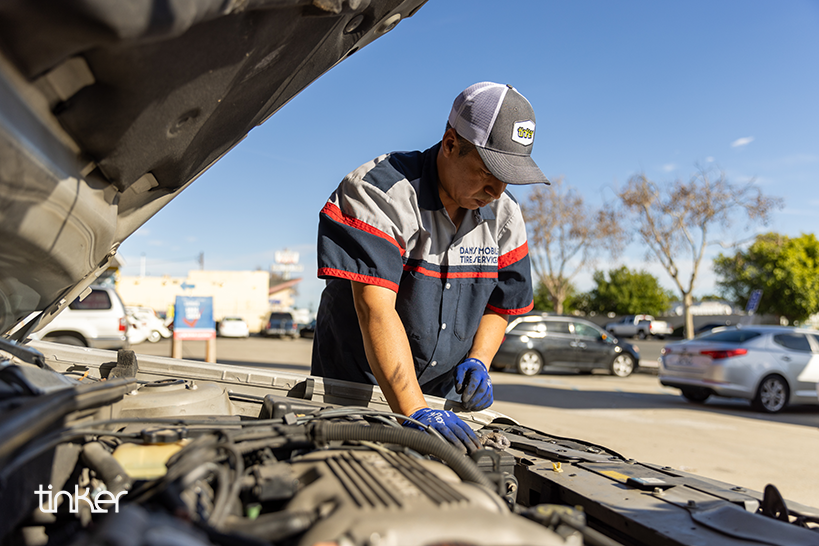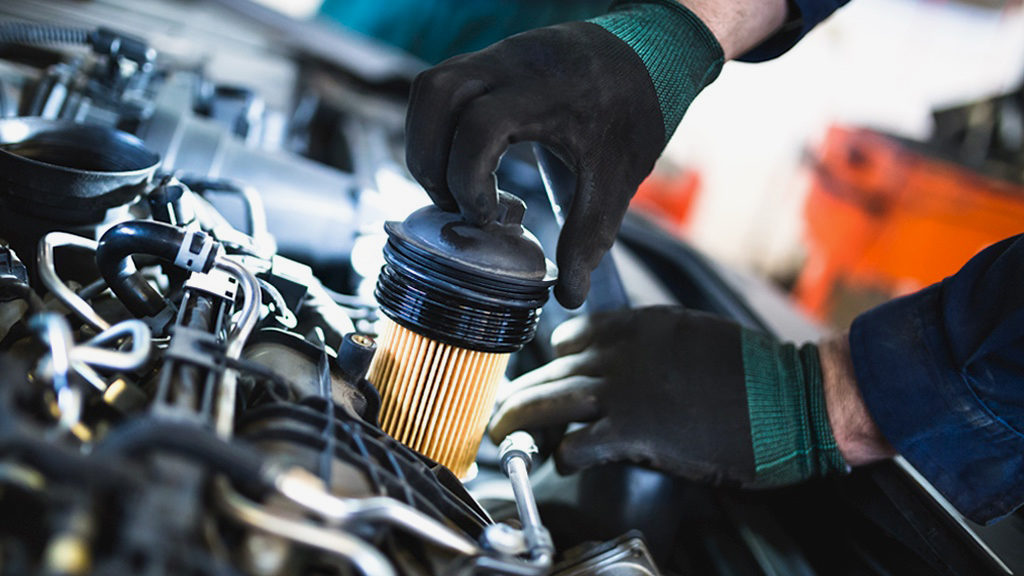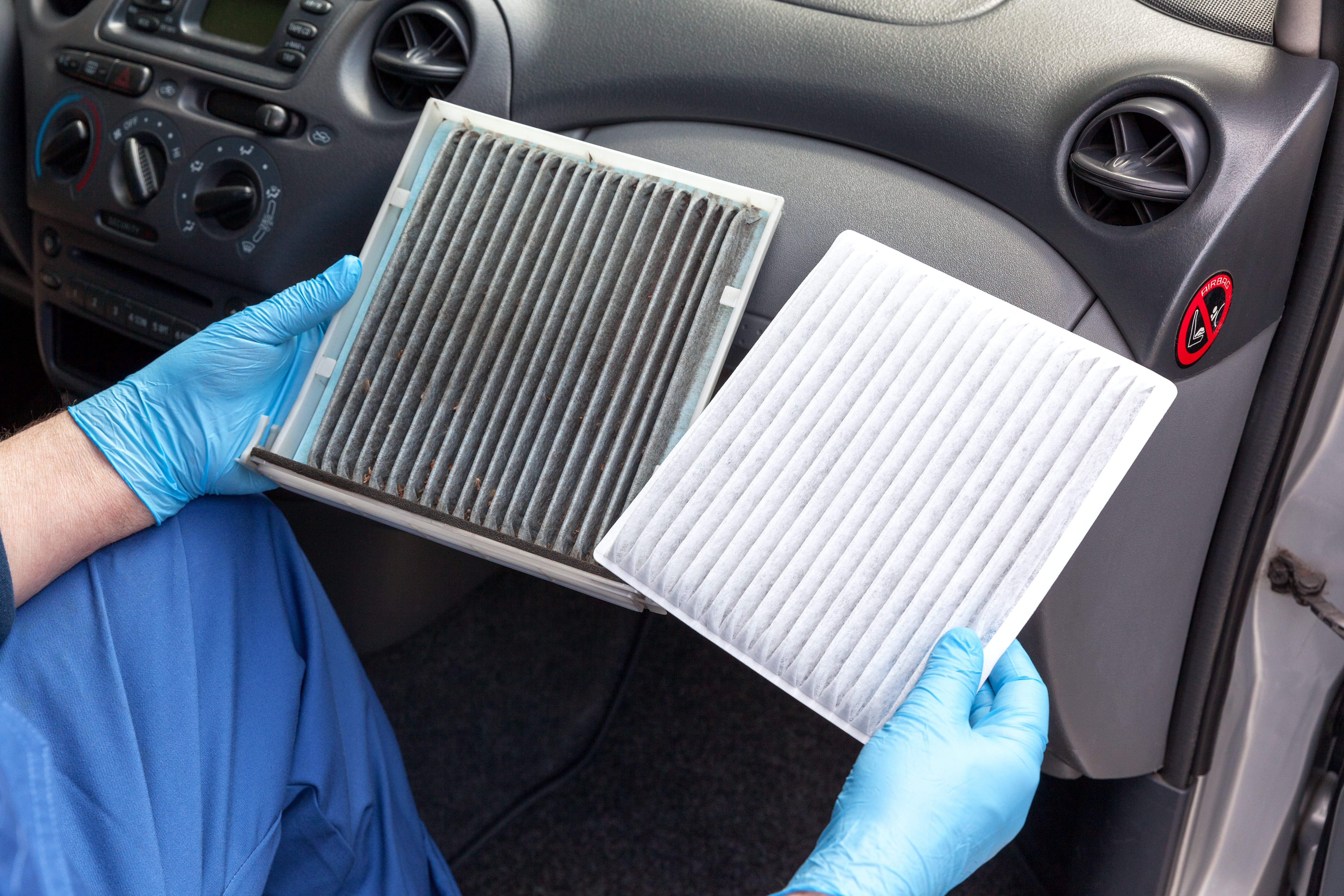All About Changing Car Air Filters: When & How
The Short Answer: Most car manufacturers recommend changing your engine air filter every 15,000 to 30,000 miles, but this varies based on your driving conditions. Replace your air filter more frequently if you drive in dusty areas or on unpaved roads.
Table of Contents
Your engine air filter plays a straightforward but important role in your car's performance - it stops dust, debris, and other airborne particles from entering your engine. Think of it as your engine's first line of defense, screening out harmful contaminants that could damage internal components. A dirty air filter restricts airflow, causing the engine control unit (ECU) to adjust the fuel-air mixture—this may lead to running rich (too much fuel).
In this guide, we'll walk you through everything you need to know about air filter maintenance. You'll learn the signs of a dirty filter, how often to replace it based on your specific driving conditions, and the steps to check and change your air filter at home. Whether you're a first-time DIYer or an experienced car owner, you'll find practical advice to help keep your engine running smoothly while saving money on maintenance costs.
Understanding Your Car's Air Filter System
Types of Car Air Filters
Your car relies on two distinct air filters to maintain clean air flow - the engine air filter and the cabin air filter. Each plays a unique role in keeping your vehicle running smoothly and your driving environment healthy.
- The engine air filter sits in your engine bay and blocks dirt, dust, and debris from entering your engine's combustion chambers. Made from pleated paper or synthetic material, it captures particles as small as 5-10 microns. This filter prevents abrasive materials from wearing down engine components and maintains the proper air-to-fuel ratio.
- The cabin air filter, sometimes called a pollen filter, purifies the air flowing into your car's interior through the heating and air conditioning system. It traps pollen, dust, exhaust particles, and other airborne contaminants before they reach you and your passengers.

How Air Filters Work
Both filters use a multi-layer design with microscopic mesh openings that allow air molecules to pass through while catching harmful particles. The pleated construction maximizes the surface area available for filtration without restricting airflow. As air moves through the filter, contaminants stick to the filter material through both mechanical trapping and electrostatic attraction.
Location and Access
You'll typically find the engine air filter housed in a black plastic casing near the top of the engine, connected to the air intake system. Many vehicles allow quick access through clips or screws on the air filter housing.
The cabin air filter usually sits behind the glove compartment or under the dashboard.
While locations vary by make and model, both filters are designed to be accessible for regular inspection and replacement. This dual-filter system works continuously to protect both your engine's internal components and your vehicle's occupants, making regular maintenance of both filters an important part of car care.
Signs It's Time for an Air Filter Change
Your car's air filter protects the engine from harmful particles, but it can't do its job when it gets too dirty. Here's how to tell when it needs replacement:
Visual Inspection
A quick look at your air filter tells you a lot about its condition. A new air filter starts bright white or off-white. As it collects dirt, it turns darker – ranging from light gray to brown or even black. Pull out your air filter and hold it up to a bright light. If you can't see light passing through most of the filter material, it's time for a change.
Watch for tears, holes, or warping in the filter material. Even small damage lets unfiltered air enter your engine. You might also spot leaves, bugs, or other debris stuck in the filter folds – this means it's catching particles as designed, but may be near capacity.

Performance Changes
Your engine might tell you it's struggling with a dirty filter. You could notice:
- More frequent stops at the gas station due to reduced fuel economy
- Less punch when you press the accelerator
- Engine running rough, especially at idle
- Dark exhaust smoke in some cases
Mileage Guidelines
Most manufacturers suggest changing your engine air filter every 15,000 to 30,000 miles. But this varies based on your driving environment:
- City driving with lots of stop-and-go traffic might need changes closer to 15,000 miles.
- Highway miles in clean areas can stretch to 30,000.
- Dusty roads, construction zones, and areas with high pollen mean more frequent changes
For cabin air filters, most manufacturers recommend replacing them every 12,000 to 15,000 miles, or once a year. However, this can vary depending on your climate and driving habits, just like engine filters.
Pro tip: Note the date and mileage when you change your filter. This helps track when you're due for the next replacement. Remember, checking your filter every few oil changes helps catch problems early.
DIY Engine Air Filter Inspection and Replacement
Most car air filters are straightforward to check and replace with basic tools. You'll need:
- A screwdriver (flathead or Phillips head, depending on your vehicle)
- A replacement air filter that matches your car's make and model
- A clean rag or paper towels
- A work light (optional)
Finding and Inspecting Your Air Filter
Your air filter housing is typically located in one of two places – either in a rectangular box near the engine's top or inside a round housing connected to the engine by a large rubber tube. Once you spot the housing, you'll notice it's held together by clips or screws.
To inspect the filter:
- Open your car's hood and locate the air filter housing
- Unclip or unscrew the housing cover – take note of how it's positioned
- Carefully lift out the air filter
- Hold it up to a light source – if you can't see light passing through the filter material, it's time for a replacement
- Check for tears, excessive dirt, or debris buildup
Replacement Steps
When installing a new filter:
- Wipe down the inside of the housing with a clean cloth to remove any dirt or debris
- Compare the new filter to the old one to confirm it's the correct size
- Place the new filter into the housing – the rubber seal should face upward
- Make sure the filter sits flat with no gaps around the edges
- Replace the housing cover exactly as it was removed
- Double-check that all clips or screws are properly secured
Test the installation by starting your engine. It should run smoothly without any unusual sounds. This simple maintenance task typically takes 15-20 minutes and helps maintain your engine's performance.
DIY Cabin Air Filter Inspection and Replacement
Finding and Inspecting Your Cabin Air Filter
Cabin air filters are usually easier to access than engine air filters. In most vehicles, you’ll find the filter:
- Behind the glove compartment
- Under the dashboard near the passenger side
- Occasionally under the hood near the windshield
To inspect your cabin air filter:
- Locate your cabin air filter compartment (check your owner’s manual if needed)
- Open the access panel—often this means removing the glove box or unclipping a plastic cover
- Carefully pull out the filter
- Check for dust, leaves, debris, or discoloration. A dirty filter may look gray, brown, or black and may have a musty smell
- Hold it up to a light—if you can’t see light passing through, it’s time for a replacement
Replacement Steps
Changing your cabin air filter typically takes less than 10 minutes and requires no tools. Here’s how to do it:
- Remove the old filter and clean out the compartment with a rag or vacuum
- Match your new filter to the old one—look for the airflow direction arrow printed on the side
- Insert the new filter in the correct orientation (usually with the arrow pointing down)
- Reattach the cover or reassemble your glove box or dash panel
- Run your fan or AC for a minute to ensure smooth airflow
Tip: If your vehicle has a dual climate system, it may have two cabin air filters—make sure you replace both.
Change Your Air Filter Today

Replacing your car's engine air filter every 15,000 to 30,000 miles maintains optimal engine performance and prevents costly repairs. By checking your filter during regular oil changes and replacing it when it shows signs of dirt or damage, you'll keep your engine running smoothly and avoid unnecessary fuel consumption. It’s also recommended to replace cabin air filters every 12,000 to 15,000 miles, or once a year.
A clean air filter helps your engine breathe properly, improving gas mileage and extending engine life. Take a quick look at your air filter during routine maintenance – if you notice dark spots, excessive dirt, or debris, it's time for a replacement. Living in dusty areas or frequently driving on unpaved roads means you'll need more frequent changes, so adjust your schedule based on your driving conditions.
Need help deciding if it's time to change your air filter? Connect with a Tinker DIY expert mechanic through our video consultation service. Our professionals will walk you through a quick visual inspection and help you make the right call on replacement timing. Download our app today to keep your engine running at its best while saving money on unnecessary replacements!


